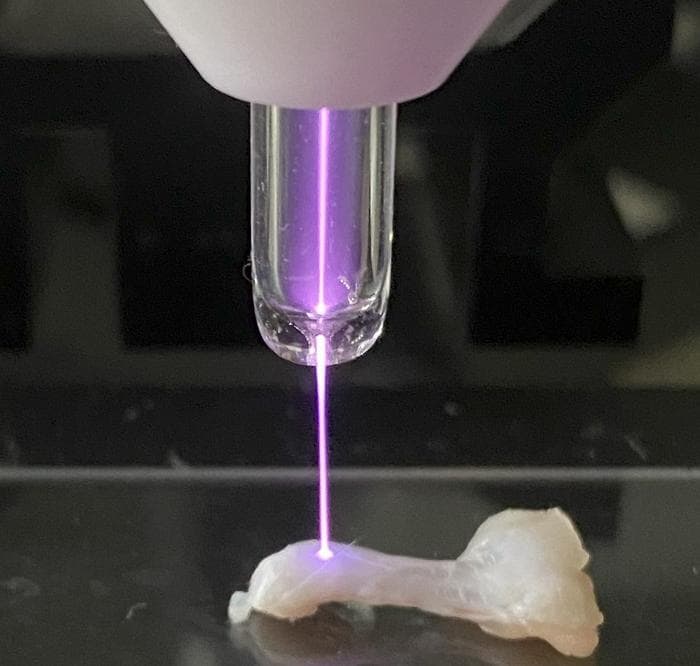Non-thermal atmospheric plasma accelerates tendon repair, Osaka study finds
While often overlooked, the Achilles tendon stands as the largest and toughest ligament in the human body. However, its resilience does not render it impervious to injury, particularly among sports enthusiasts in their 30s and 40s.

The Achilles tendon of a rat is irradiated with non-thermal atmospheric-pressure plasma.
Achilles tendon ruptures can be debilitating, necessitating surgical intervention and an arduous recovery process involving prolonged rest, immobilization, and treatment.
In a bid to expedite the healing timeline, a multidisciplinary research team from Osaka Metropolitan University has turned its attention to a novel therapeutic approach: non-thermal atmospheric-pressure plasma. Led by Katsumasa Nakazawa, a graduate student in the Department of Orthopedic Surgery, Associate Professor Hiromitsu Toyoda, Professor Hiroaki Nakamura from the Graduate School of Medicine, and Professor Jun-Seok Oh from the Graduate School of Engineering, this study represents the first to demonstrate the potential of plasma irradiation in accelerating tendon repair.
Achilles tendon ruptures
The experimental design involved inducing Achilles tendon ruptures in laboratory rats, followed by surgical suturing. One cohort received subsequent plasma irradiation via a helium plasma jet directed at the sutured area, while a control group underwent the conventional treatment protocol. The results were striking: the plasma-irradiated group exhibited markedly faster tendon regeneration and increased strength at two, four, and six weeks post-surgery when compared to their untreated counterparts.
“We have previously discovered that irradiation of non-thermal atmospheric-pressure plasma has the effect of promoting bone regeneration. In this study, we discovered that the technology also promotes tendon regeneration and healing, showing that it has applications for a wide range of fields,” Associate Professor Toyoda declared. “Combined with current tendon treatments, it is expected to contribute to more reliable tendon regeneration and shorter treatment time.”
Non-thermal atmospheric-pressure plasma
This groundbreaking study not only unveils a promising avenue for expediting Achilles tendon repair but also underscores the versatility of non-thermal atmospheric-pressure plasma in promoting tissue regeneration across diverse anatomical structures. While further research is warranted to elucidate the underlying mechanisms and establish clinical efficacy, this novel approach holds the potential to revolutionize tendon injury management, offering hope for shorter recovery periods and improved patient outcomes.
As the medical community continues to explore innovative therapeutic modalities, the findings from Osaka Metropolitan University contribute to the growing body of evidence supporting the multifaceted applications of non-thermal atmospheric-pressure plasma in regenerative medicine.

